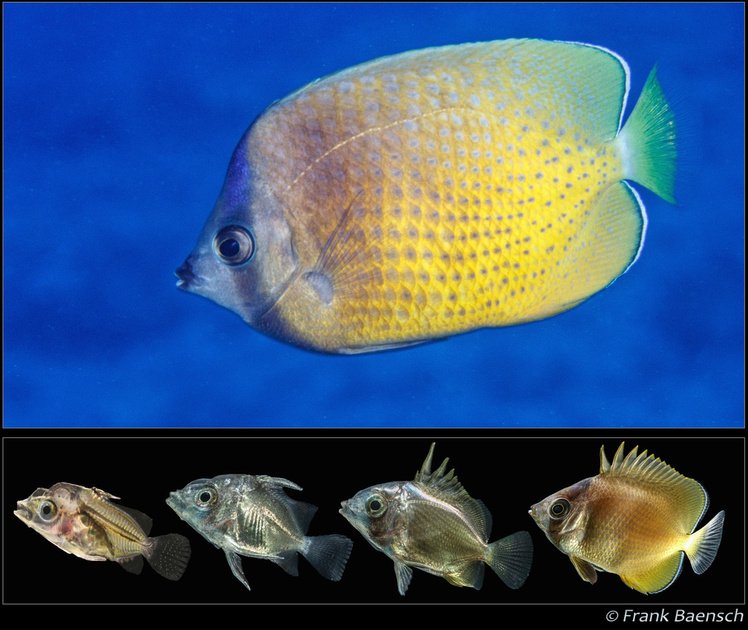
If you’re considering diving into the world of breeding butterflyfish, it’s essential to know what you’re getting into. Much like nurturing a delicate plant, breeding these incredible creatures requires patience, knowledge, and the right environment. Whether you’re a marine enthusiast or someone simply curious about this fascinating venture, understanding the ins and outs of butterflyfish breeding can help you turn a tricky endeavor into a rewarding hobby.
Understanding Butterflyfish Species
Before you embark on your breeding journey, it’s crucial to understand the different species of butterflyfish. There are around 100 species, with some more suited to captivity than others. For instance, the Four-striped Butterflyfish and the Saddleback Butterflyfish are popular choices for aquarists. They’re not only beautiful, but they are also more likely to adapt to tank life.
Here’s the thing: not all butterflyfish play well together. Some species are territorial and may not thrive in a shared space. So, if you’re planning to breed them, you’ll want to ensure you pick species that can coexist peacefully.
When selecting your butterflyfish, consider factors such as:
- Tank size: Some species need more space.
- Water quality: Not all butterflyfish tolerate the same conditions.
- Temperament: Choose species that are compatible with each other.
Grasping these characteristics will set the tone for a successful breeding environment.
Setting Up the Perfect Aquarium
Creating a friendly habitat for your butterflyfish is like preparing a cozy nest for a new pet. You want it to feel safe and comfortable. The ideal aquarium should mimic their natural environment, which usually includes plenty of hiding spots and an array of corals. Here’s how to get started:
1. Choose Your Tank Size: Aim for a tank that’s at least 75 gallons. Butterflyfish appreciate space to swim around, so bigger is often better.
2. Add Live Rock: Incorporating live rock not only beautifies your setup but also provides hiding spots for shy fish.
3. Maintain Water Quality: Butterflyfish are sensitive to changes in water quality. Keep ammonia, nitrites, and nitrates at safe levels. Regular water testing is key.
4. Lighting Matters: Offering a good balance of light will help any corals thrive, creating a more inviting environment for your butterflyfish.
With this setup, your fish will feel relaxed, which is essential for breeding.
Feeding Guidelines to Encourage Breeding
Feeding your butterflyfish the right diet is critical. In the wild, they feast on corals, small invertebrates, and algae. Replicating this diet in your aquarium can ensure they’re healthy and ready to breed. Here’s a simple menu you can follow:
- High-quality flakes or pellets: Look for options specifically designed for butterflyfish.
- Frozen foods: Offer a mix of mysis shrimp, brine shrimp, and other marine proteins a few times a week.
- Vegetables: Incorporate blanched spinach or seaweed for a balanced diet.
Honestly, variety is the spice of life here. By mixing up their meals, you can keep them interested and healthy. A well-fed fish is more likely to breed successfully.
The Breeding Process: What to Expect
Breeding butterflyfish can feel like waiting for a flower to bloom. It takes time, but it’s worth it. When conditions are just right, you may notice your butterflyfish engaging in courtship behavior. This usually involves some playful swimming and displays of their colors.
Here’s what happens next:
1. Spawning: This occurs mostly during dawn or dusk. The female lays eggs, and the male fertilizes them.
2. Egg Care: After laying eggs, the parents usually guard them. Still, you should prepare to separate the eggs into a separate tank to ensure safety from potential predators.
3. Hatching: Depending on the species, the eggs can hatch within a few days. Once that happens, ensure you have plenty of infusoria or rotifers ready to feed the fry.
This part can be nerve-wracking, but let me explain: patience is crucial. Sometimes, things won’t go as planned. You might face challenges like infertile eggs or even predation.
Common Challenges in Breeding Butterflyfish
Breeding butterflyfish isn’t all sunshine and coral. You’ll likely encounter some bumps along the road. Here are a few common challenges and how to tackle them:
1. Health Issues: Butterflyfish are prone to diseases like ich. Keeping your tank clean and maintaining good water quality can help prevent these issues.
2. Aggression: If your fish are fighting, they might need more space or hiding spots. Always monitor their behavior and be ready to separate aggressive fish.
3. Egg Fertilization Problems: Sometimes, eggs aren’t fertilized properly. This can happen due to stress or unsuitable tank conditions. Keeping a calm environment can help.
Remember, every setback is a learning opportunity. With each challenge, you’ll grow as a breeder.
Tips for Success in Butterflyfish Breeding
To successfully breed butterflyfish, having a game plan is essential. Here are a few tips that have helped other breeders:
– Research the Specific Species: Each species has unique needs. Understanding these can significantly improve your chances of success.
– Maintain a Consistent Environment: Sudden changes in temperature or water quality can stress your fish. Keep everything stable.
– Observe and Adapt: Pay attention to your butterflyfish. Watching their behavior will give you clues about their health and breeding readiness.
– Join a Community: Engage with other marine enthusiasts. They can offer valuable insights and tips based on their experiences.
With some dedication and the right mindset, breeding butterflyfish can become a fulfilling and rewarding adventure.
In closing, breeding butterflyfish in captivity is like crafting a beautiful piece of art—you need the right materials, a bit of patience, and the courage to try. Whether you’re a beginner or just curious about the process, understanding the steps, challenges, and tips for success can make your journey smoother. Embrace the challenges, celebrate the successes, and enjoy the stunning beauty of these remarkable fish as they thrive in your care.

